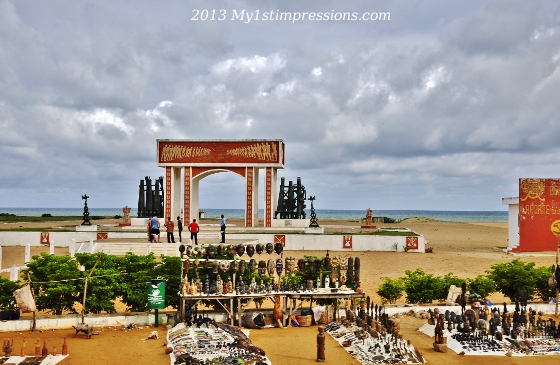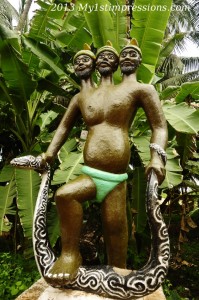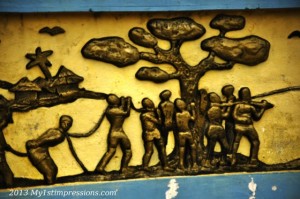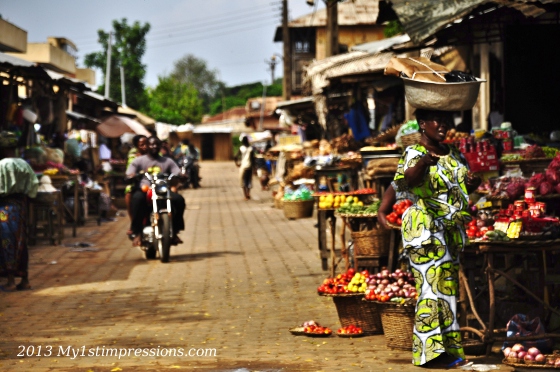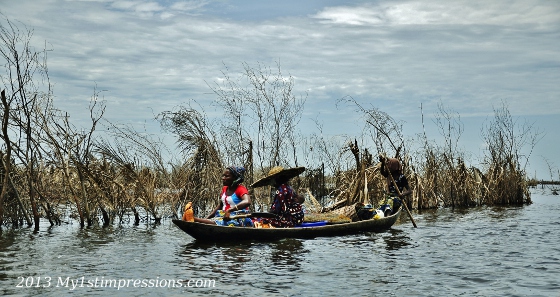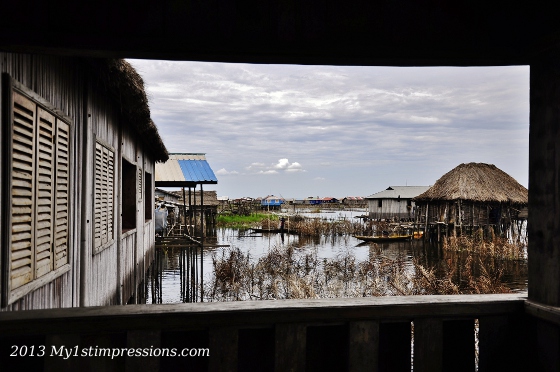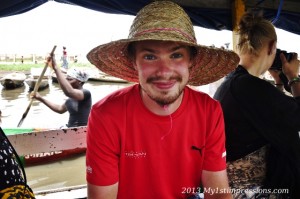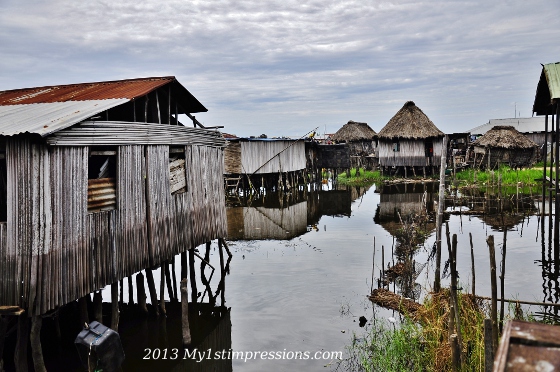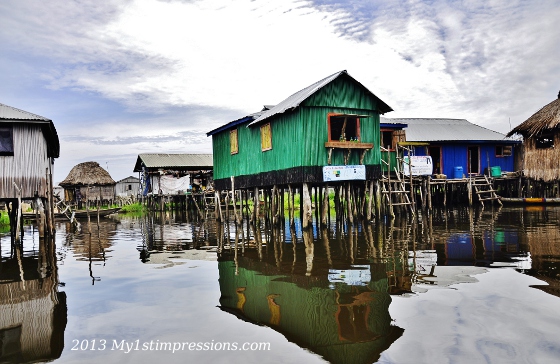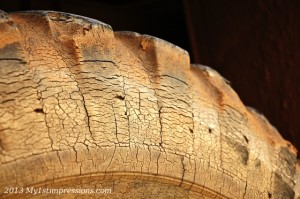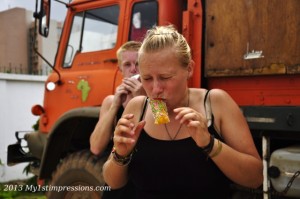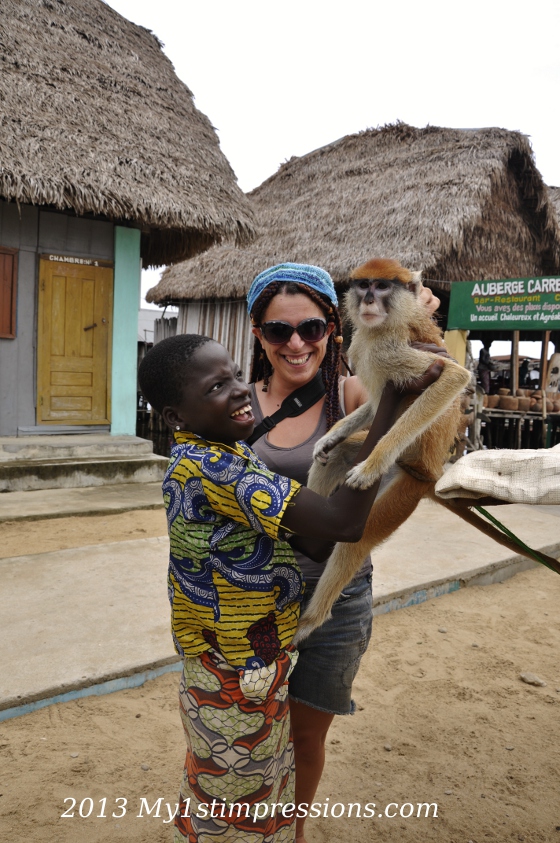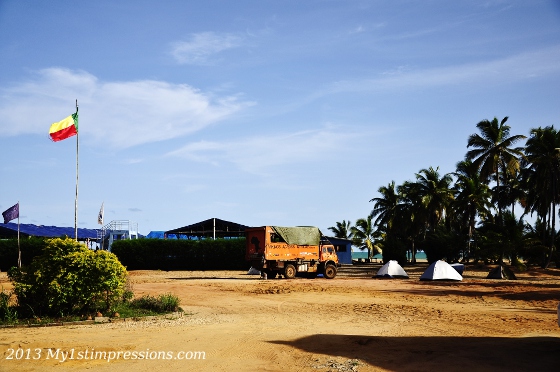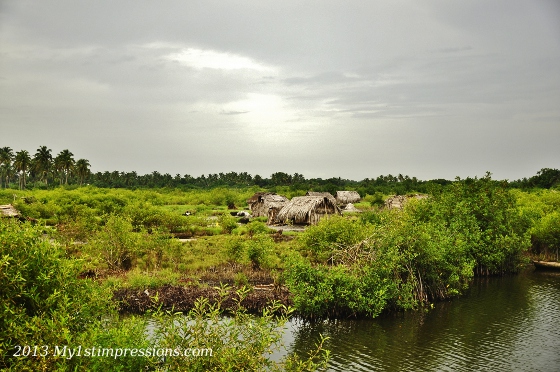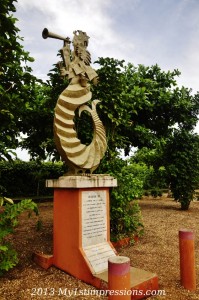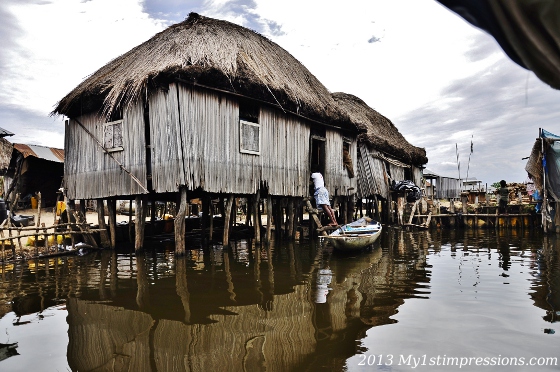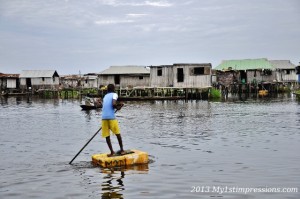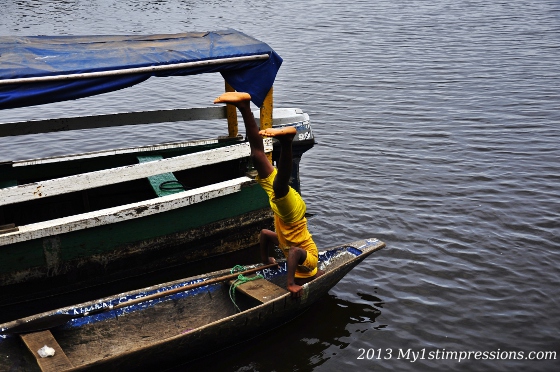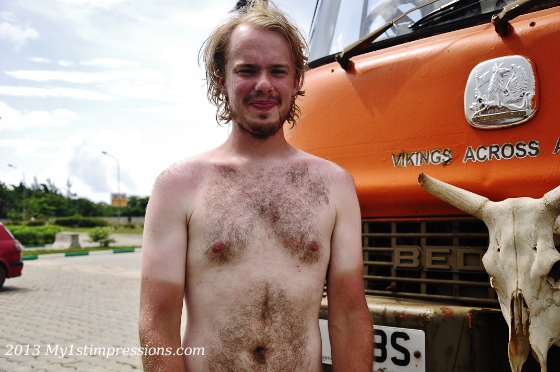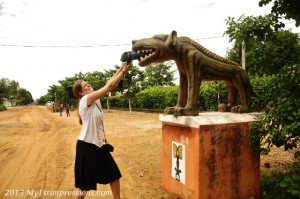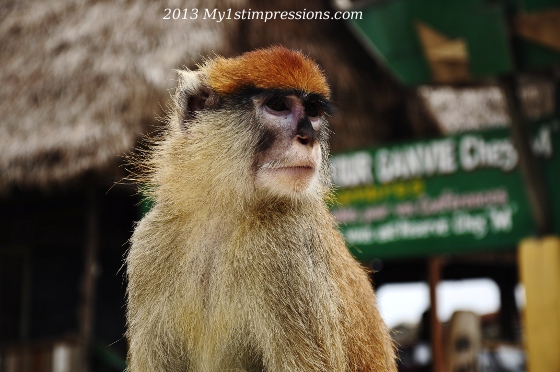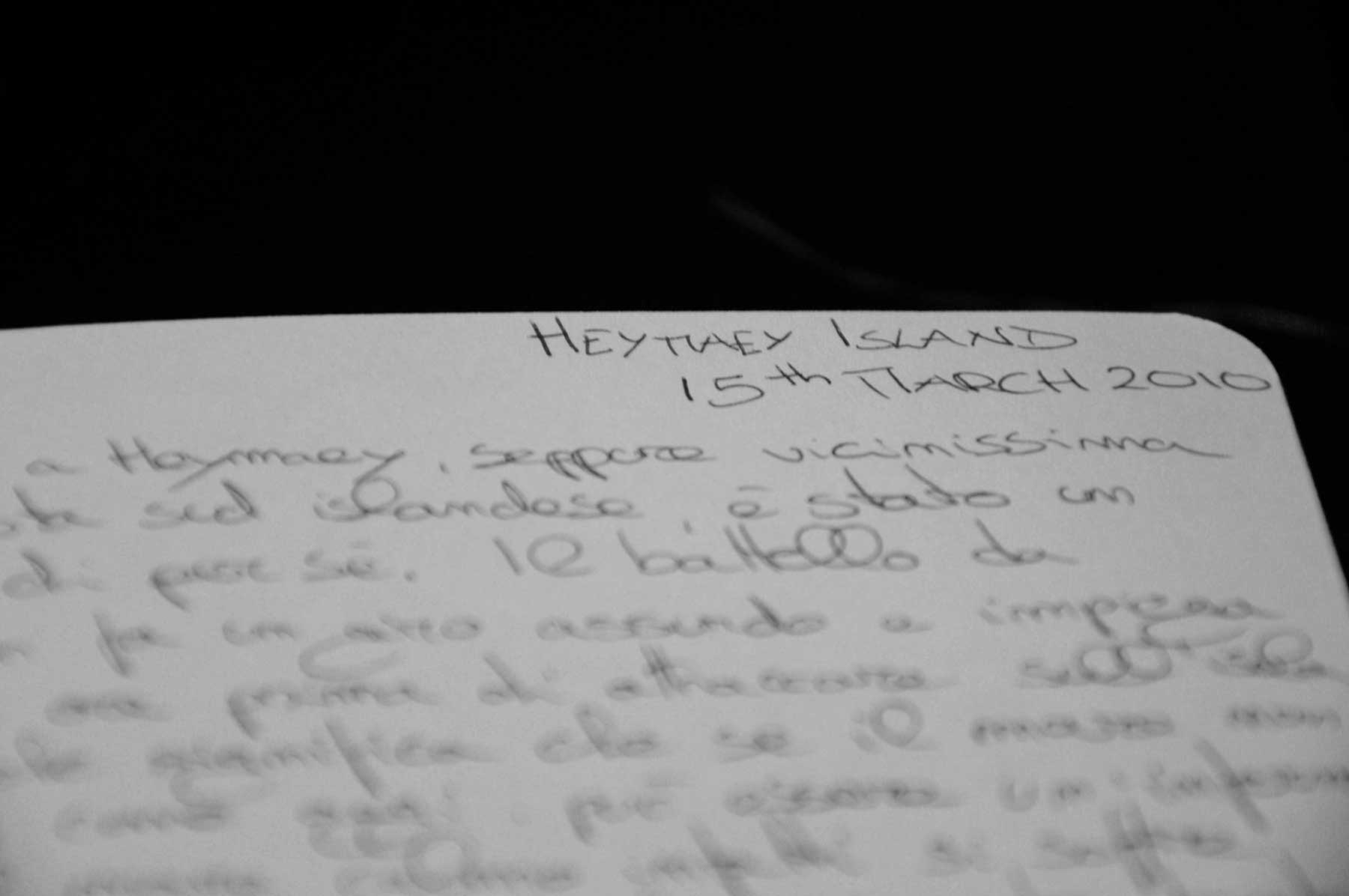Leaving Togo and its friendly charm was not much of a shock as we got to Benin, which is almost its continuation, both geographically and socially.
In Cotonou we finally applied for the Nigeria visa, and with our great surprise, people at the Nigeria House were friendly and polite and we got it after few days waiting, while we enjoyed the town of Ouidah and its historic sites.
Ouidah has an history as rough as its ocean. For more than 3 centuries it has been the centre of Benin slave trade; from its stunning beaches more than 12 million people left their homes, their country, their lives, to be sent to Brazil or Haiti working mainly in the cotton fields. The connection with Brazil is still very strong, they brought there the voodoo tradition and their music heritage.
Before reaching the ships, the enchained slaves had to walk the 4 kilometres that
separates the town from the beaches, and in the middle of the path had to go around the Tree of Forgetfulness, symbol of their lost life forever. Once they would have gone around the tree, they would hae forgotten their life to be submitted to a new life of obedience and most probably death. The tree is not there anymore, substituted by a monument representing the ancient god of the sea to remember them forever.
The day we left Ouidah, heading to the border with Nigeria, we had a fabulous stop over to visit Ganvié, a fishing village where 30000 Tofinu people live in bamboo huts on stilts, out the lake of Nokou.
They say Tofinu escaped the slave hunters in the 17th century, by moving there, in the middle of the lake, as the hunters couldn’t reach them because banned by a religious custom who forbid them to venture into the water. After centuries, the Tofinu are still here, living mainly of fishing, and going from one house to another on their pirogues, used to go to the mainland as well.
The village and its inhabitants are fighting with the growing tourism, but instead of
using it as a mean to develop, they look scared and whenever they see someone with a camera they hide their face an turn it on the other side. The guides don’t do anything to help the people getting something more by the growing tourism, and they just bring you from one souvenir shop to another, without telling anything about the place. It’s very easy to understand why they don’t like visitors, as they may see them more like a treat than a resource, and this is a pity as the place is simply amazing, and reaching it on such a tiny pirogue crossing the lake for about half hour makes it unique.
These people live on the water, they move from one house to another by pirogue, they transport fruit and clothes on it, it’s not weird to see children driving one of them, their life is simple as we cannot even imagine, it’s made of simple things and
it’s a pity people were not open to us for a chat or at least a greeting, but they were instead hiding all the time, like they had been abused by the mass tourism or by those who are trying to make money out f it without respecting their sensibility. Tourism here could be really a resource, but it’s instead felt like a treat and these make you feel almost guilty when you go to visit them.
Overall, Ganvié was beautiful, a rare pearl of Africa.
Overall, Benin was beautiful I must say, even though at times the people were less friendly and honest than their Togolese counter part, trying always to get money out of our pocket in an often non honest way at all.
This was the end of our month of “holiday inside the holiday”. At the border with Nigeria, where we drove a couple of days ago, I had the feeling we were at the edge of the nice and warm side of West Africa, and that it would be a lot different from now on in Nigeria.
It was nice to be back on the truck and on the road after so many weeks steady next to a swimming pool.
On our first evening in Benin we cooked again and it felt weird but nice at the same time to eat again in this way, next to our truck. We were all joking imagining ourselves in a year, when once in a while we may feel the desire to eat next to a truck again, going out of the house with our plate full of food looking for the first big truck in the street and eating next to it. It’s just a joke but we have started to think about how our life will be changed after this trip, in few month, in one year, we start to imagine it even though life, that life, is still so far from now, from here, from the heart of Africa and none of us is in a rush to get it there yet.
Lasciare il Togo e il suo fascino amichevole e caldo non è stato così shoccante come credevamo perché il Benin ne è la continuazione, sia geografica che sociale.
A Cotonou abbiamo fatto domanda per il visto nigeriano e con grande sorpresa siamo stati ricevuti gentilmente dagli impiegati della House of Nigeria e non è stato difficile ottenere il visto, dopo soli pochi giorni di attesa nei quali ci siamo rilassati a Ouidah tra una nuotata in piscina e una passeggiata tra i suoi siti storici.
Ouidah ha una storia tempestosa almeno quanto il suo mare. Per più di tre secoli è stata il centro della tratta degli schiavi in Benin; dalle sue stupende spiagge più di 12 milioni di uomini lasciarono le loro case, il loro paese, le loro vite per essere mandati in Brasile o ad Haiti a lavorare nelle piantagioni d cotone. La connessione con il Brasile ancor oggi è molto profonda, gli schiavi portarono con sè nel nuovo mondo la tradizione de voodoo e la loro musica, che ancora oggi è parte integrante di quella società.
Prima di raggiungere le navi su cui venivano imbarcati, gli schiavi dovevano attraversare i 4 km di strada che separa la città dal mare e lungo il tragitto passare attorno all’ “Albero dell’Oblio”, simbolo della loro vita perduta per sempre. Una volta girato attorno all’albero, avrebbero dimenticato la loro vita per sempre, per essere sottomessi ad una nuova vita di obbedienza, sofferenza e molto probabilmente morte. Oggi l’albero è stato sotituito da un monumento in memoria, rappresentante l’antico dio del mare della tradizione voodoo.
Il giorno in cui abbiamo lasciato Ouidah per dirigerci al confine con la Nigeria, abbiamo fatto una stupenda sosta a metá strada, per visitare il villaggio di pescatori di Ganvié‘, costruito su palafitte di bambú in mezzo ad un lago raggiungibile solo su delle piroghe, dove vivono 30000 Tofinu, un popolo trasferitosi in mezzo a quelle acque nel 17mo secolo per sfuggire ai cacciatori di schiavi, che non si potevano addentrare nelle acque del lago a causa di un rito religioso che lo proibiva.
Dopo 4 secoli i Tufinu sono ancora là, vivono essenzialmente di pesca e si spostano da una casa all’altra o sulla terraferma con le loro piroghe .
Il villaggio e i suoi abitanti lottano quotidianamente contro la crescita del turismo nella zona, che invece di essere visto come mezzo di sviluppo, viene visto con paura e sospetto, tanto che ogni volta che qualcuno prova a fargli una foto loro nascondono il viso girandosi dall’altra parte.
Le guide non fanno niente per aiutare la gente a guadagnare qualcosa dal turismo crescente, ma portano visitatori semplicemente da un negozio di souvenir ad un altro, senza spiegare una parola sul posto e senza coinvolgerli direttamente.
É facile capire perché non amino i visitatori, in quanto vengono visti più come una minaccia che come una risorsa, e questo è un peccato perché quel posto è meraviglioso e raggiungerlo in piroga dopo mezz’ora nel lago lo rende unico nel suo genere in Africa.
Questa gente vive sull’acqua, si sposta solamente con le loro piccole imbarcazioni,da una casa all’altra, trasporta frutta e vestiti su di esse, non è strano vedere bambini che le guidano, la loro vita è semplice come noi non possiamo neanche immaginare, è fatta di piccole cose ed un peccato che non si aprono a noi almeno per un sorriso o un saluto, ma si nascondono come se fossero stati abusati dal turismo di massa o da coloro che cercano di guadagnare con le loro vite senza rispettarne la sensibilità. Il turismo qui potrebbe essere una risorsa, ma e’ invece una minaccia che fa sentire tutti un po’ colpevoli nel visitarli.
In generale Ganié è stupenda, una rara perla d’Africa.
Ed in generale è il Benin ad essere meraviglioso, anche se a volte le persone si sono rivelate meno socievoli e oneste della loro controparte togolese, cercando sempre di rubarci soldi quando dovevamo pagare qualche cosa.
Questa è stata la fine del nostro mese di “vacanza nella vacanza”. Al confine con la Nigeria ho avuto la sensazione di essere al confine, o meglio al limite dell’Africa Occidentale bella e tranquilla e che la Nigeria sarebbe stata molto diversa.
È stato bello ritrornare sul camion e sulla strada dopo tante settimane di riposo vicino ad una piscina. La prima sera in Benin abbiamo anche cucinato di nuovo e sembrava quasi strano mangiare in quel modo, vicino al
camion, dopo tanto tempo. Ridevamo tutti immaginandoci fra un anno, alla fine di questo viaggio, quando una volta ogni tanto sentiremo tutti il bisogno di mangiare vicino ad un camion ed usciremo la sera con il nostro piatto pieno,
la forchetta in mano, per cercare il primo camion per strada e mangiarci accanto. E’ solo
uno scherzo ma ognuno di noi sta iniziando a pensare a come sarà la propria via alla fine di questo viaggio, anche se quella vita è ancora lontana da oggi, da qui, dal cuore dell’Africa e nessuno di noi va così di fretta.
Click HERE to see the full photoset of Benin
Clicca QUI per vedere l’album del Benin
Add comment
-
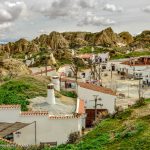 Guadix, a Spanish Hobbiton
An hour away from Granada, hidden between prehistoric karst mountains,( read more...)
Guadix, a Spanish Hobbiton
An hour away from Granada, hidden between prehistoric karst mountains,( read more...) -
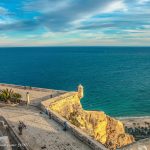 Alicante, Spain with a Nordic vibe
Alicante represents the door to the Southern vibes of Spain.( read more...)
Alicante, Spain with a Nordic vibe
Alicante represents the door to the Southern vibes of Spain.( read more...) -
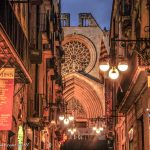 Tarragona, pure magic!
Arriving in Tarragona on the very first night of its( read more...)
Tarragona, pure magic!
Arriving in Tarragona on the very first night of its( read more...) -
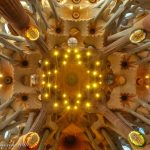 In the sacred woods of La Sagrada Familia
It is truly impossible to describe the feeling I had( read more...)
In the sacred woods of La Sagrada Familia
It is truly impossible to describe the feeling I had( read more...) -
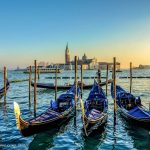 Venice, just a perfect day
Take a sunny day after the Christmas holidays when tourists( read more...)
Venice, just a perfect day
Take a sunny day after the Christmas holidays when tourists( read more...) -
 Northern Lights:The dance of the Green Spirits
For many years one of the most funny stories about( read more...)
Northern Lights:The dance of the Green Spirits
For many years one of the most funny stories about( read more...)
